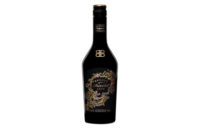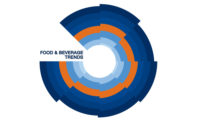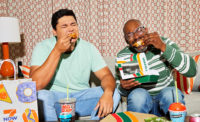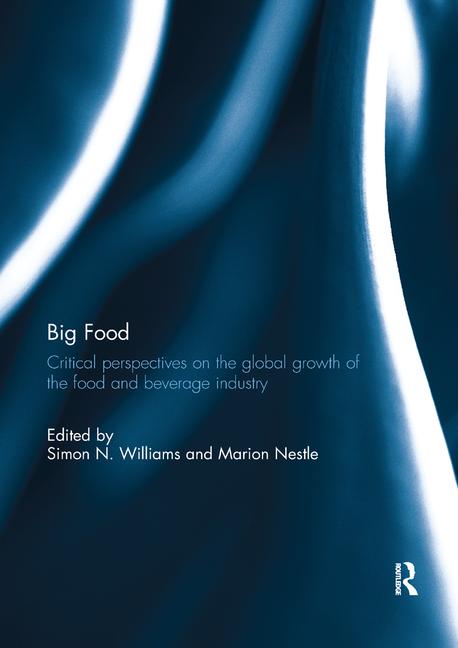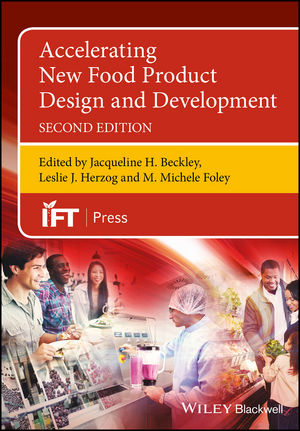Retail Product Trends Annual | Beverages
2017 Beverage Trends: Glass is Half Full
Nearly all retail beverage segments are generating annual percentage gains that outpace the channel itself

Among those profiling supermarket trends and category performance is Willard Bishop LLC, an Inmar Inc. business in Long Grove, Ill. In its May 2016 report, “The Future of Food Retailing,” Willard Bishop notes there were 26,223 traditional supermarkets in 2015 and they generated $467.8 billion in annual sales and weekly store sales of $343,042. Because traditional supermarkets boast an average of 45,000 SKUs and can offer additional services, these stores offer consumers diversity and the largest number of products from which to choose.
Comprising 46% of the retail share, traditional supermarkets remain the largest channel within the retail food industry. However, Willard Bishop’s Jon Hauptman, senior director of retail, notes that dollar sales in the channel have been flat as more consumers shop at supercenters, fresh-format stores, dollar stores and online.
Echoing those comments is Susan Viamari, vice president of Thought Leadership at Information Resources Inc. (IRI), Chicago. She says that despite the breadth of products offered, supermarket penetration has dipped.
Even so, beverages are a source of hope for traditional grocers. Hauptman notes that sales of alcohol and non-alcohol beverages contributed to a more than 6% increase in the supermarket channel versus a year ago,
“In 2015, the supermarket channel grew 1.2%, and we can expect growth in 2016 to be even lower, i.e., at best, flat due to price deflation,” Hauptman says. “Carbonated beverages are the foundation stone of the beverage business, comprising approximately half of center-store beverages. However, the bottled water and functional beverage categories are quite large and growing rapidly.
“Bottled water growth is being fueled by new product innovation, e.g., new flavored sparkling waters, etc.,” he continues. “Functional beverage growth is being driven by the continued popularity of energy drinks and the expansion of enhanced waters.”
From IRI’s vantage point, Viamari says the non-alcohol beverage market accounts for 11% of grocery channel dollar sales; alcohol beverages account for 7% of sales; and general food, the largest department, accounts for 33% of sales.
Viamari observes,“… During this time period, the beverage sector outperformed total store. In grocery, beverage units [were] plus 1.1% and dollars [were] plus 2.1%. The top-performing categories are energy drinks (units plus 9.1%; dollars plus 8.6%); bottled water (units plus 7%; dollars plus 8.5%); and ready-to-drink [RTD] coffee/tea (units plus 6.5%; dollars plus 8.1%). Growth in these categories is being driven by premiumization — new flavors, new benefits, new packaging, etc. — expanding benefits beyond simple thirst quenching … to delivering against sought-after benefits, such as nutritional enhancement, workout recovery and energy enhancement.”
Because of consumers’ interest in in-home entertaining, “cocktail mixes is experiencing good growth (units plus 4.4%; dollars plus 4.7%) due to consumer interest in new and exciting alcoholic beverage solutions (e.g., Barefoot Refresh premixed cocktails and coolers),” Viamari adds.
Another firm looking at the retail beverage category IBISWorld, Los Angeles.
In its September 2016 “Supermarkets & Grocery Stores in the US” report, IBISWorld notes that “beverages constitute about 16.1% of revenue in 2016, and include both alcoholic and non-alcoholic drinks. Carbonated beverages, followed by beer and wine, were the most popular by unit sales in 2015.”
The report continues, “Due to an increasingly health-conscious customer base, soda sales declined as a share of revenue in the past five years. Also, the demand for sugary beverages, such as fruit juices and drinks, has waned due to health concerns. For example, refrigerated fruit juices and drinks sales were down 2.3% in 2015. To counteract the falling demand for sugary beverages, healthier drinks, such as lightly sweetened iced tea and kombucha, helped maintain this segment’s performance.”
This story excerpted from Beverage Industry’s January 2017 feature “Beverage market a bright spot for supermarkets channel,” written by Barbara Harfmann, managing editor. Visit www.bevindustry.com for more information.
Originally appeared in the March, 2017 issue of Prepared Foods as Glass is Half Full.
Best New Beverages
 Beverages drive sales, continual new product innovation.
Beverages drive sales, continual new product innovation.
Editors at BNP Media’s Beverage Industry (BI) analyzed the new beverage launches throughout 2016 and selected five brands they think are driving innovation and energizing consumers. Following are excerpts from the editors’ “2016 Innovations of the Year” selections, as published in BI’s December 2016 print edition.
Product: Garden Party Botanical Hard Sodas
Editors’ Description: After studying trends in the adult beverage category and noticing the fast emergence of the hard soda segment, Erin Edds, creator and co-founder of Garden Party Botanical Hard Sodas, set out to develop a premium ready-to-drink (RTD) alcohol beverage that rose above the rest.
A brand of Indianapolis-based RumsTech Ventures Corp., Garden Party is a premium, 100% all-natural hard soda with no artificial additives or preservatives and flavors that are modern and innovative through the use of botanicals. The 8% alcohol-by-volume hard sodas initially launched last fall in two flavors: Garden Party Ruby, a ginger soda with hints of hibiscus and pomegranate; and Garden Party Violet, a lemon soda infused with lavender and blackberry. Two new flavors, Peaches and June, are set to debut this spring.
Product: Sonoma Cider Apple Brandy
Editors’ Description: Last April, Healdsburg, Calif.-based Sonoma Cider added to its portfolio with the release of Apple Brandy, a Calvados-inspired organic brandy that uses the juice from five varieties of organic apples that are fermented at the company’s cidery before being double-distilled at Ally 6 Craft Distillery. Co-founder Robert Cordtz explains that the Apple Brandy is the big brother of the Hatchet, a hard cider made from fermented single-strength organic apple juice. “We start with our Organic Cider, double-distill it in an alembic copper still, [and] then age it in small oak casks for six to 10 months to develop complexity and a satin-smooth finish,” he explains. “Once it’s fermented, we take it over to our friends at Alley 6 distilling, and we distill it together and put it in medium-char, new American oak barrels.”
Product: Suja Organic Drinking Vinegars
Editors’ Description: Born out of Suja Juice Co.’s obsession with nutritious cold-pressed juice and supporting consumers’ immune and digestive health, the San Diego-based company added Suja Organic Drinking Vinegars to its portfolio in fall 2016. Made with organic apple cider vinegar and cold-pressed fruits and vegetables, each 13.5oz, single-serve bottle contains more than 4 billion colony-forming units (CFUs) of live vegan probiotics. The line is available in five flavors: Hibiscus Ancho Chile, Strawberry Balsamic, Peach Ginger, Cucumber Ginger and Lemon Cayenne. The 30-calorie drinking vinegars also are lightly sweetened with stevia and/or coconut nectar and are exclusively available at Whole Foods Markets nationwide for a suggested retail price of $2.99 a bottle.
Product: Tropicana Probiotics
Editors’ Description: Consumer and category insights led Tropicana North America, a PepsiCo business, to launch Tropicana Essentials Probiotics, a line of 100% juices with probiotics. Björn Bernemann, vice president and general manager for Tropicana North America, says Tropicana Essentials Probiotics contain 1 billion live and active cultures in each serving and will be available in three flavors: Strawberry Banana, Pineapple Mango and Peach Passion Fruit. Each 8oz serving contains more than the recommended daily value of vitamin C and has no added sugar, preservatives or artificial flavors. The juices will be available in 10oz and 32oz bottles for a suggested retail price of $1.69 and $3.49, respectively.
Product: Verday Chlorophyll Water
Editors’ Description: Also capturing consumers’ quest for healthy, hydrating beverages that contain functional ingredients was New York-based Chlorophyll Brand LLC and its new Verday Chlorophyll Water. Noting the growth of the bottled water category, Verday Chlorophyll Water was born from its founders’ chance introduction to chlorophyll on a beach in Tulum, Mexico, several years ago. Verday Chlorophyll Water is packed with 100mg of chlorophyll, more than consumers would find in four cups of spinach or 12 cups of arugula, the company says. It also is shelf stable, non-GMO, vegan, gluten free and paleo with zero calories, sweeteners or preservatives.
 Vegans, vegetarians and flexitarians to push plant-based innovation.
Vegans, vegetarians and flexitarians to push plant-based innovation.
Trend Tracking, Tasting
Beverage developer and insights provider Imbibe Inc. (www.imbibeinc.com), Niles, Ill., listed 2017’s top trends along with on-trend beverage examples.
Sustainability. Consumers will be looking for brands and products that adopt more sustainable business practices. Some are opting to reduce waste by using compostable packaging, while others are making commitments to greener processes in their offices and manufacturing facilities. Prepare to hear about more brands that find ways to re-purpose previously discarded ingredients in 2017.
Brands you may have missed in 2016: Green Sheep Water, Uncommon Coffee Roasters, Misfit Juicery
No Sugar Added. The recent FDA mandate requiring brands to call out added sugars on their products’ nutrition labels by July 26, 2018, is forcing brand owners to think critically about alternative ways to sweeten their products. Children’s food and beverages will continue to include claims of “% less sugar” and brands will develop more products that are not so sweet.
Brands you may have missed in 2016: Tickle Water, Truly Spiked & Sparkling
Sugar Substitute. The dialogue regarding what constitutes added sugars versus naturally-occurring sugar will be a hot topic. Plant waters such as maple, cactus and birch may gain more market share because of their inherent sweetness.
Brands you may have missed in 2016: Treo Birch Water, Cali Water
Plant-Based. Vegans, vegetarians and flexitarians continue to push plant-based innovation forward, highlighting the health benefits that many plant-based products offer. Jerky, cheese, burgers, and yogurt are now available in plant-based varieties, and often make a point to call out benefits like healthy fats, protein and fiber.
Brands you may have missed in 2016: Koia Protein Drinks
Clean Ingredients. More ingredient statements will include familiar and pronounceable ingredients –and fewer of them. As consumers re-discover the benefits of botanicals, which range from anti-inflammatory properties to soothing upset stomachs, more of these familiar herbs and spices will be incorporated into food and beverages.
Brands you may have missed in 2016: Rebbl Tonics, Blue Buddha
2017 Retail New Products Annual
Looking for a reprint of this article?
From high-res PDFs to custom plaques, order your copy today!




